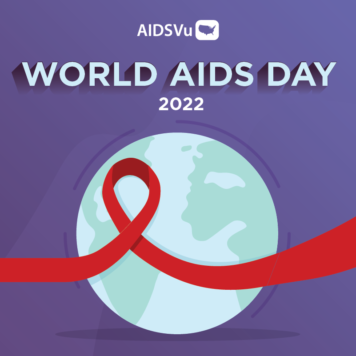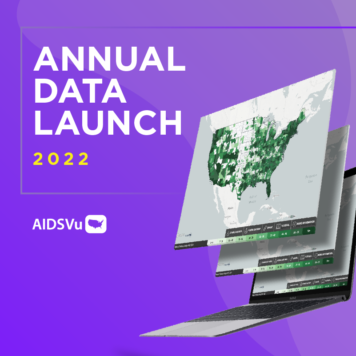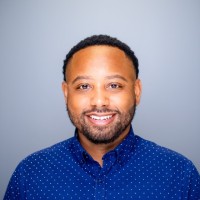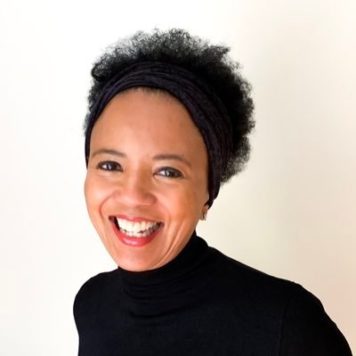Dr. Sayward Harrison is an Assistant Professor in the Department of Psychology at the University of South Carolina. Her research focuses on young people in the South experiencing chronic health conditions including HIV.
Your research focuses on improving the health and well-being of youth who are impacted by acute and chronic health conditions, can you tell us more about what drew you to this line of research?
Like many other researchers, my interest in how we can help young people achieve better physical and mental health comes from personal experiences. My younger brother Elliot was born with a rare genetic condition called Prader-Willi syndrome that causes developmental delays as well as a unique constellation of physical health, mental health, and behavioral health challenges. Growing up as an older sister to Elliot allowed me to see firsthand how poorly some of our systems support the needs of children and families, and the way that society often stigmatizes certain medical conditions. Those lessons have really stuck with me throughout my life and career as a social and behavioral scientist.
I went on first to become a school psychologist where I provided psychological services to children, adolescents, and families in school-based settings. In my clinical practice, I was seeing that schools were often poorly equipped to meet the needs of youth who were experiencing different health conditions. These experiences led me to get a PhD in health psychology with a focus on pediatrics. Over the course of my career, I’ve spent time working in clinical practice as a psychologist in outpatient clinics, hospitals, and school-based health centers to help integrate mental health services into our healthcare system.
Now I’m an assistant professor at the University of South Carolina and I run the Healthy Futures Lab in the department of psychology. Most of our research focuses on improving HIV outcomes for adolescents and young adults who live in the deep south, where our HIV epidemic is currently centered. Youth living with HIV have the poorest outcomes in terms of HIV testing, rapid linkage to care, staying engaged in their care, and adhering to their antiretroviral therapy every day. Here in the South, we also have massive disparities in terms of which youth are impacted by HIV. Youth who are minoritized by their sexual identity, gender identity, race, and/or ethnicity are much more likely to acquire HIV. I am passionate about the work I do because I want to be a part of ending those disparities that we have here in the South, especially ending the stigma that surrounds HIV for our young people.
You have been working on the development of a mobile health intervention for youth living with HIV in the Southern U.S. Can you explain the goals of this project, why it is necessary, and the impact you hope to see?
More than a quarter of new HIV infections occur among youth, and youth have poorer outcomes across each step of the HIV care continuum. Those outcomes are especially poor for youth living with HIV here in the Deep South, but we don’t have many tailored approaches to meet their needs. I received a K01 grant, a career development award, from the National Institute of Mental Health that is allowing me to focus on better understanding why these disparities are so rampant among youth in the South, and to work towards improving them.
First, I’m doing formative work to better understand the psychosocial, behavioral, and sociocultural barriers to engagement, care, and medication adherence for youth living with HIV here in South Carolina. I do this by conducting qualitative work with youth themselves, their HIV care providers, and staff from local HIV community-based organizations (CBOs). I will use those findings to develop a tailored multi-component mobile health intervention that will hopefully help these youth to do better across the HIV care continuum.
Many promising mobile health strategies have been developed, but we’ve found that youth are not using them. So, we have been analyzing what will drive youth living with HIV to be interested in utilizing these tools. Ultimately, the goal of that project is to produce a tool and conduct a small pilot trial with about 40 people living with HIV here in South Carolina. What I’m hearing in my formative work is the need to address the social isolation that comes along with an HIV diagnosis, as well as unmet mental health needs that are very prevalent among youth living with HIV.
Earlier this year, you published a study on the social determinants of health and HIV prevention in the South. Can you walk the readers through some of the social determinants of health that are especially prominent in rural Southern areas, and what we can do to alleviate their impact?
That paper was titled, “Do I Want PrEP or Do I Want a Roof?” And that was a direct quote from one of our participants. That title highlights the real-life difficulties and impossible choices that often confront people in the South who are at risk for HIV, who are facing decisions about whether they want to be able to put food on the table or pay for cab fare to get to a PrEP appointment. When we say, “social determinants of health,” we mean the social and economic conditions in which people grow and develop within their communities that can either help or hurt their health.
Unfortunately, here in the rural south, many social determinants are hurting and even killing our residents. We have high rates of poverty, lack of health insurance, educational inequities, inadequate healthcare infrastructure, poor public infrastructure, and more. One incredibly important step we can take to address these determinants is to vote. From the earliest days of the epidemic, the experience of living with HIV and addressing the HIV epidemic has been inherently political. I think we must continue to raise our voices about these underlying systemic inequities that are driving our current HIV epidemic.
We need to expand access to healthcare programs, increase funding for education and public health, and update our archaic and unscientific laws—such as HIV criminalization—which drive stigma and worsen our HIV outcomes. The way that we push for these changes is to advocate for legislative action for policy change, and work within communities to address the current needs.
In this same study, you highlight the importance of considering the social and environmental context and prioritizing community-based partnerships in efforts to reduce the burden of HIV. Can you elaborate on these findings and explain what you mean by community-based partnerships?
When I hear that first question, I think of the widespread poverty that exists in South Carolina, particularly in rural communities. Currently, about 8% of our residents don’t have access to high-speed broadband internet. And in our most rural communities, one in five residents does not have access to internet. To access information about HIV, find a testing center, and learn about PrEP, most of us would use the internet. So again, it’s important to think about the change we need to implement at the systemic level to lower our current HIV rates.
In terms of community partnerships, as a researcher, I see it as critical to have strong partnerships with the people in our communities who are doing this work. They’re informing me about what we need to study and what we don’t have answers for, and then I share the findings back with them. We are working together collaboratively to make a difference.
To highlight an example, recently I was fortunate enough to work with Dr. Tonia Poteat from UNC Chapel Hill on a project called “TRANSforming the Carolinas,” where we dug into the root causes of disparities in HIV prevention, access, and engagement among Transgender people of color in the South. We worked closely with Transgender communities in North and South Carolina and with community partners, ultimately using a community health worker approach to overcome some of the barriers we identified. We conducted an interesting pilot project in which we trained Transgender individuals of color in South Carolina to become community health workers so that they could work within their own networks to link people to HIV prevention and care.
December 1st is World AIDS Day, a time to raise awareness and education about HIV and AIDS. What message would you like to share on this day?
As I am based in South Carolina, my message is on the importance of re-engagement and care. Here in South Carolina, about one in three people living with HIV have fallen out of care, meaning that they’ve tested positive at some point, but have lost access to care. It’s critical that we re-engage them. Stigma is a major reason for people staying out of care, and the longer they do, the worse it is for their health.
My key message for people living with HIV, especially teens and young adults, is that you are not alone. There are fantastic providers and amazing community-based workers at our HIV organizations and within the HIV activist community. Most importantly, there are other youth out there who are living the same shared experience who can be there to support you in getting linked back into care if you’ve fallen out.




